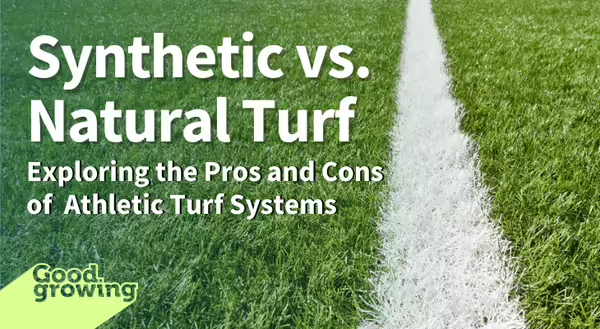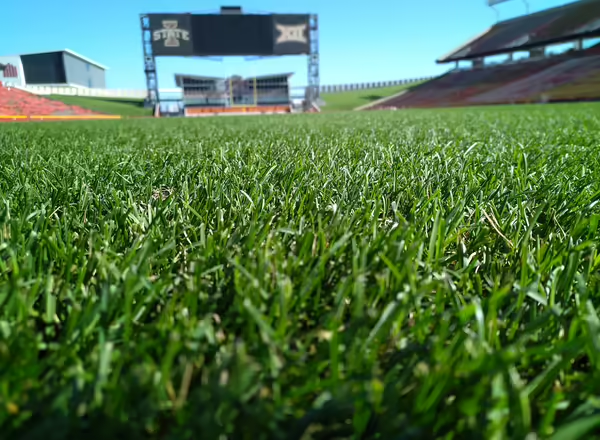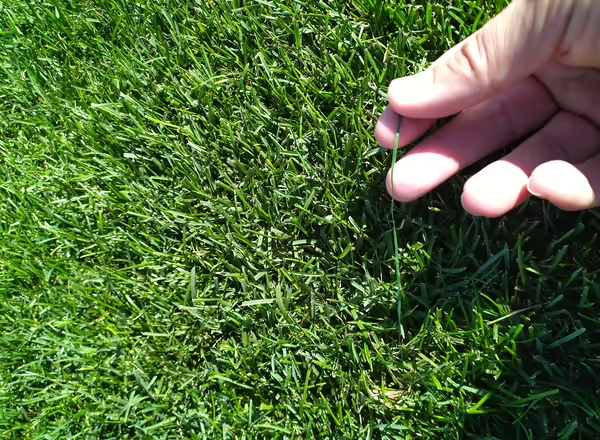
I should not be writing this. The voice in my head says to keep my mouth shut. Yet, the other voice says, maybe someone will find this information helpful. That is after all what we are supposed to do at Illinois Extension, make sure the knowledge and research do not stay locked up somewhere, but extend it out across the state to help people make more informed decisions. Even though it may open a can of worms, it is time to talk about synthetic turf.
Hopefully, the idea of replacing a home lawn with synthetic turf was short-lived. A year ago it seemed to be a very popular concept on social media. But now I’m seeing lots of online commentary stating “Boy I wish I didn’t put in fake grass!” Maybe it works in Nevada, but it is not a great idea for Illinois.
A debate rages on comparing synthetic turf and natural turf in an athletic setting. I have spent the past few years sitting on couches, tailgates, and bleachers with other sports fans debating the merits of real and artificial turf. There are certainly positives to both viewpoints. Yet, both systems have downsides. Schools, park districts, and other organizations that manage athletic fields must choose how they invest their money for their sporting facilities.
Synthetic Athletic Turf
Starting, let’s look at synthetic athletic turf. Essentially, this system is comprised of rubber material and plastics installed on a gravel and/or sand base. The surface is considered more cushioned for falls, yet that cushioning varies and depends on the depth of the rubber material below the surface. Synthetic turf is marketed to need fewer inputs. It doesn’t need to be mowed, fertilized, aerated, reseeded, and so on. That reduction of efforts is seen as cost savings for the lifetime of the field. Synthetic turf can be played on in the rain without destroying the field and it can handle more frequent use. When you’re in a rural school with one field to handle all your sporting events, synthetic turf can make a huge difference in access to a high-quality play surface.
Very often the main downside people mention about synthetic turf is a perceived increase in injuries. There is a lot to unpack in that argument, more than I have room in this article, but in short, we can’t just point to synthetic turf as a culprit. There are multiple factors to consider, including ever-changing gear, footwear, rules, and athleticism of the players. However, there are evident health concerns about synthetic turf. Quite obvious is how much hotter the playing surface becomes during sunny weather. The radiating warmth can lead to overheating of athletes, and even skin burns during hot summer weather. Additionally, the cushioned surface changes with time. As debris, paint build-up, and the degradation of rubber occur, it alters the hardness of the surface. Synthetic turf has also been shown to have a greater potential for abrasions and burns from sliding.
Synthetic turf also has a lifespan. It does not last forever. And depending on local climate, maintenance, and use it can shorten or increase that lifespan. While many companies make varying claims on the lifespan of their synthetic turf, it seems like most synthetic field surfaces last ten years or less. The base layers under the play surface can last longer.
The upfront cost of synthetic turf is often the biggest hurdle for most organizations. It is not uncommon for an initial installation cost of synthetic turf to reach $1 million. But after installation, there are maintenance costs. A 2008 study showed annual labor costs averaging $6,000 with 375 hours of labor for synthetic turf compared to $4,000 for 250 hours of labor on natural turf fields. Finally, a used-up synthetic turf must be landfilled and that will incur more costs.
Natural Athletic Turf
These athletic fields have a playing surface of traditional living turf grasses. It is not uncommon for these fields to be planted in the native soil. However, some athletic fields have their grass growing in a sand base.
The primary benefit to natural grass play surfaces is we have been using these for a long time. The research has been done and the knowledge is out there on how to manage these fields. Natural grass fields also introduce fewer synthetic materials into the environment. A natural grass play surface is cooler and more forgiving when it comes to sliding. Plus, if you’ve ever been on a hot synthetic field, it often smells like hot tires. A natural turf athletic field smells like, well grass!
Yet, the major problem with natural turf is all it takes is one game in poor weather conditions to destroy a field. Imagine a football game in the rain. Cleats tearing at the ground. Players coming off the field with mud and chucks of turf in their helmets. The day after, the field manager is met with a mud pit. And how do you get the field ready for next week’s game let alone the soccer game coming up in a few days? And when the ground becomes bare and dry, we now have a harder surface where players are more prone to injury. Essentially, natural turf play surfaces have limitations on the amount of use, which may restrict who can use a school or community field.
Managing a natural turf field is more than just mowing. It requires a higher level of horticultural knowledge and continued education. Organizations have to be willing to hire trained or pay to train their staff on turf management. In this case, we are not dealing with a plastic carpet, but instead living plants that will respond and change with time. These living plants are growing under high-use conditions and require inputs such as fertilizers, pesticides, irrigation, overseeding, and more beyond this list. Becoming experienced in these different practices is critical when it could make or break your athletic field’s performance.
Is there help for communities to make this decision?
Installing a particular field because the county next door has one is not a great way to go about this decision. It should involve multiple groups of individuals in a community, especially the people who manage the athletic fields.
There are some resources online that can help inform organizations during this process. These will be linked below. Also, I’m not a turf expert, just the messenger. If you contact me asking if you should go with natural or synthetic turf, you won’t get much out of me.
The decision to invest in synthetic or natural turf is a choice that must be weighed individually by an organization’s unique situation. Here are some resources that may help as a guide:
- Investing in Safe Sports Fields – Cornell
- Reimagining Sustainable Community Sports Fields of the Future: a Framework for Convergent Science-Stakeholder Decision-Making – Published in Circular Economy and Sustainability, by Texas A&M researchers
- Is adding a synthetic field the answer? – Cornell
- Athletic Fields and Sports Turf – Penn State Extension
- BMPs (Best Management Practices) for Sports Turf – Sports Field Management Association
- A Guide to Synthetic and Natural Turfgrass for Sports Fields Selection, Construction, and Maintenance Considerations – Sports Turf Managers Association
Good Growing Fact of the Week: There are hybrid natural/synthetic turf systems. The Jack Trice Stadium field at Iowa State University is natural grass with green plastic fibers stitched in to give a green appearance even when the living turf goes off-color in the winter and hot summer.



Sign up for our emails! Want to get notified when new Good Growing posts are available? SIGN ME UP
Give us feedback! How helpful was this information (click one): Very helpful | Somewhat helpful | Not very helpful
MEET THE AUTHOR
Chris Enroth is a horticulture educator with University of Illinois Extension, serving Henderson, McDonough, Knox, and Warren counties since 2012. Chris provides horticulture programming with an emphasis on the home gardener, landscape maintenance personnel, and commercial landscapers. Additional responsibilities include coordinating local county Master Gardener and Master Naturalist volunteers - providing their training, continuing education, advanced training, seasonal events, and organizing community outreach programs for horticulture and conservation assistance/education. In his spare time, Chris enjoys the outdoors, lounging in the garden among the flowers (weeds to most).